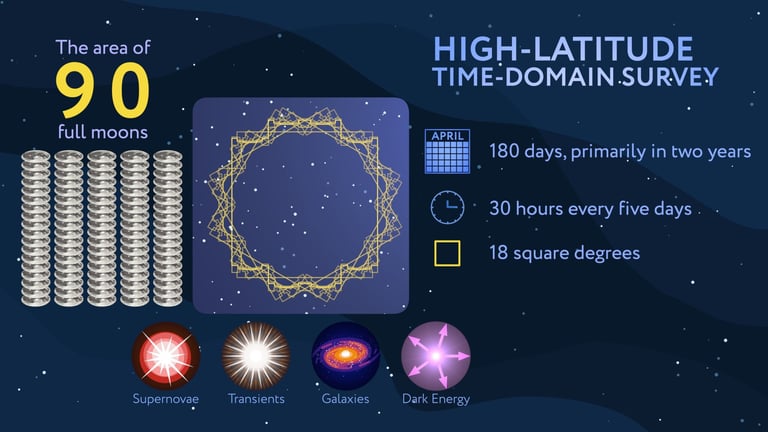NASA's Roman Telescope to Unveil 100,000 Cosmic Explosions, Redefining Universe's Evolution and Dark Energy
July 15, 2025
NASA's Nancy Grace Roman Space Telescope is poised to revolutionize our understanding of the universe by detecting over 100,000 cosmic explosions, including supernovae and other celestial phenomena, over its mission.
Roman is expected to observe supernovae dating back more than 10 billion years, potentially setting a record for the farthest observed type Ia supernova, which will deepen our knowledge of the universe's evolution.
The telescope could make the first confirmed detection of pair-instability supernovae, which are explosions from the universe's first stars and are believed to leave no remnants, with the potential to identify more than 10 such events.
This survey aims to uncover rare phenomena such as tidal disruption events, superluminous supernovae, and kilonovae from neutron star collisions, significantly expanding our understanding of these extraordinary cosmic occurrences.
Scientists anticipate that the extensive data collected will lead to unexpected discoveries, revealing phenomena beyond current scientific expectations.
Advanced machine learning techniques will be employed to analyze the vast data, helping to differentiate between various cosmic events and potentially uncovering surprising new phenomena.
The mission includes the High-Latitude Time-Domain Survey, which will scan the same region of space every five days for two years, creating a detailed time-lapse of cosmic fireworks and transient events.
The survey will identify approximately 27,000 type Ia supernovae, greatly surpassing previous efforts, which will improve measurements of cosmic distances and shed light on dark energy.
In addition to type Ia supernovae, Roman is expected to detect around 60,000 core-collapse supernovae from massive star collapses, although these are less useful for dark energy research.
The mission's discoveries could clarify the nature of dark energy and its potential evolution over time, as current evidence suggests it may not be a constant force.
Overall, Roman's observations are projected to reveal about 100,000 cosmic explosions, providing invaluable insights into the early universe, black hole activity, and the fundamental forces shaping our cosmos.
Roman may also detect several kilonovae resulting from neutron star collisions, further contributing to our understanding of these powerful and mysterious events.
Summary based on 2 sources
Get a daily email with more Science stories
Sources

NASA • Jul 15, 2025
One Survey by NASA’s Roman Could Unveil 100,000 Cosmic Explosions - NASA
Phys.org • Jul 15, 2025
One survey by NASA's Roman could unveil 100,000 cosmic explosions